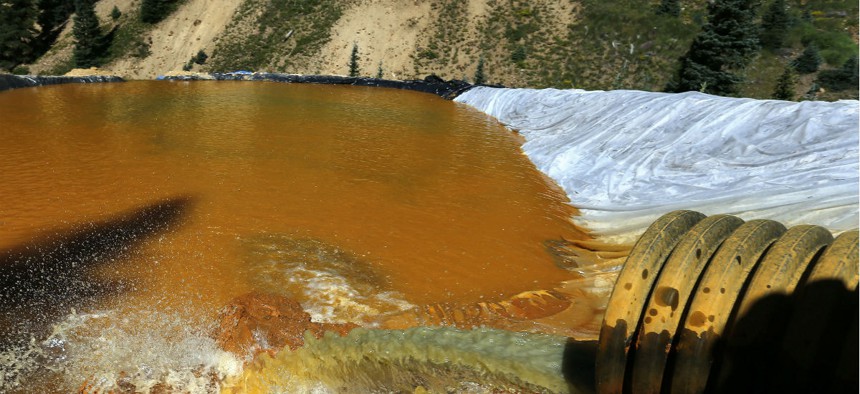EPA Shifts Blame Away From Itself in Report on Toxic Water Blowout
Agency finds the leak was "likely inevitable."
Environmental Protection Agency employees missed some warning signs and failed to take certain measures to prevent the release of toxic water from a defunct mine in Colorado, the agency found in an internal report, but the EPA still said there was probably nothing it could have done to stop the wastewater release.
The mixed findings pointed to some shortfalls in the EPA’s preparations before it began an investigation into the blowout at the Gold King Mine, but ultimately the agency said circumstances and others involved were to blame.
Officials in EPA’s region eight determined there was low or no water pressurization built up in the mine, which the report pointed to as the most significant factor in the blowout.
However, the EPA maintained the officials had significant experience, and consulted with other experts in the area. Other state and local officials were provided “an opportunity for additional input regarding the planned activities,” but none “raised any significant concerns” with EPA’s proposed activities, according to the agency’s findings.
Prior the blowout, which turned the Animas River orange with the toxic release and has required a cleanup effort involving many federal and state agencies, EPA personnel took several steps to assess risk levels, the report said. Of course, those steps proved insufficient.
“Despite the available information suggesting low water pressure behind the debris at the adit entrance, there was, in fact, sufficiently high pressure to cause the blowout,” EPA’s investigative team wrote in the report. “Because the pressure of the water in the adit was higher than anticipated, the precautions that were part of the work plan turned out to be insufficient.”
The EPA admitted it failed to drill a hole to measure pressurization, which the agency said would have been “very difficult and expensive.” It also did not calculate the volume of water trapped behind the plug.
EPA investigators said even if it had taken those steps, there is no guarantee it would have prevented the blowout from occurring. Ultimately, they concluded the massive toxic water leak was “likely inevitable.”
Still, the report suggested more could be done in the future to prevent such blowouts and to mitigate damages if one does occur. Consulting additional experts “may be warranted,” the EPA said. It also recommended the agency develop guidance so future mine teams assess blowout risk levels and create contingency plans, among other details. Contractors working on the mine failed to create an emergency action plan for dealing with a potential blowout, and the report proposed future contracts make such a plan a requirement.
While drilling into the mine would have come with huge bill and may not have prevented the blowout, the investigators said EPA should consider doing it in the future.
“It can also be a lengthy process and require considerable effort and expense,” the investigators wrote. “However, if it could be performed successfully and safely, drilling could provide the information needed to ascertain the pressure behind the collapsed workings within the mine.”
Despite these recommendations, the EPA ended its report on a note of pessimism that future blowouts can be prevented.
“In the end, while additional information gathering may reduce the uncertainty, a complete understanding of the underground conditions may not be attainable,” the agency wrote.




